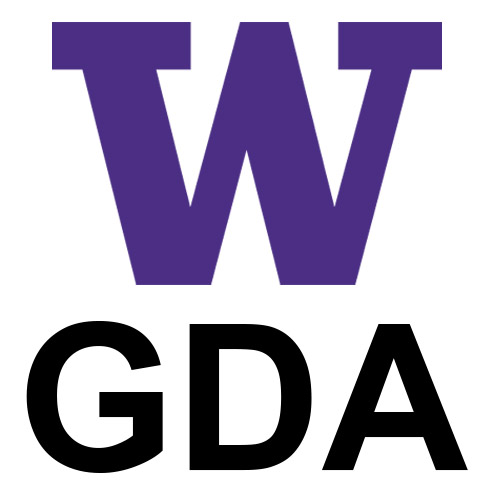Weekly Procedures for Instructor
Contents
Weekly Procedures for Instructor#
Prepare solutions notebook#
Master notebook with all code, markdown
Use a ‘*_solutions.ipynb’ filename
Prepare student notebook#
Manually duplicate the solutions notebook and rename, removing ‘_solutions’
Delete desired code or output
Note: More sophisticated approaches can use tags to programatically remove code
Prepare a new “starter code” repository in the GDA organization#
Click green “New” button to create new repo
Fill in details:
Repository name: 02_Python_Core_Packages
Private
Initialize with README.md
Add .gitignore for Python
Go to Settings and select checkbox for “Template repository”
Clone the repo to local or Jupyterhub (wherever student notebook was prepared)
Add the student notebook(s), sample data, and any other relevant files
git add, commit, push
Optional: update README.md with relevant instructions
On Github, create a new feedback branch
Note as of March 2020, Github Classroom now has an option to do this when creating assignment
Prepare Github Classroom assignment:#
Note: Some time in January 2024, Github will change how classroom assignments work. Check the blog post here. Stay tuned for notes on our new workflow.
Go to https://classroom.github.com/classrooms/ and select the appropriate class
New Individual Assignment
Provide a name that is consistent with above: 02_Python_Core_Packages
Private (otherwise, students can see each other’s answers before deadline)
Add starter code
Copy/paste the starter code repo name “02_Python_Core_Packages”, then select
Select “Import starter code using source importer” (haven’t tried template option)
Don’t select deadline (set this on Canvas)
Don’t Grant admin repo access
Check “Enable feedback pull requests”
This will create
feedbackbranch and automatically open a PR that can be used to comment on their submitted files
Create Canvas assignment#
First Week#
Type: Assignment
Name: 02_Python_Core_Packages
Due: midnight on the following Friday
Points: 20
More Options:
Accept the github assignment here: [insert assignment invitation url]. When completed, submit the url to your repo here on canvas. * Submission Type: Online, Website URL
Save and Publish
Subsequent Weeks#
Duplicate previous assignment
Update Name
Update Assignment url
Update Due Date
Post to Slack#
Create new channel: 02_Python_Core_Packages
Post link to Github Classroom assignment
Post link to Canvas assignment for submission
Optional: Updating assignment repo#
If you discover errors or need to update the assignment materials after distribution…
Can be messy with Jupyter notebooks, after students start modifying the assignment notebook, especially if they are new to git
If updates are absolutely needed, students can do the following:
git remote add upstream https://github.com/UW-GDA/02_Python_Core_Packagesgit pull upstream master
Teach it!#
During class:
Open slack channel
Follow Github Classroom Assignment link
Click “Accept this assignment”
Open terminal on Jupyterhub, cd to
~/labssubdirectorygit clone [assignment_url]From file browser, open the relevant notebook(s)
Work through interactive examples
Optional: preserve interactive demo
Clean up and
git committhe notebooksgit pushto preserve in the starter code repo
Grading#
Canvas#
Open Canvas SpeedGrader
Sort by time of submission
Click on url pointing to student’s Github repo (opens new browser tab)
Optional: quickly view rendered notebook in Github to make sure figures are properly included (
%matplotlib inlinebefore submission)If not, send message on Slack
Github#
** Note: This is no longer necessary if using the Github Classroom “Enable feedback pull requests” option **
Github Pull Request workflow:
If feedback branch does not exist:
Click on “commits” header
Find the last instructor commit (before students modified), click on the
<>icon next to the github hash (e.g., “f2aca22”) to browse files at that commitCreate a new “feedback” branch
Click on button that says “Tree: f2aca22c94”
In dropdown, type “feedback” and hit enter
Create a new Pull Request:
Click “New pull request” button
Under “base:” select the new “feedback” branch
Under “compare:” select master branch
Should create new dialog
Enter “Feedback” in the title (may need to replace existing commit message)
Click green “Create pull request” button
Once the Pull Request has been created
Wait a few seconds, and the review-notebook-app bot should add a new cell in the Conversation with a purple button for ReviewNB
Click that to open in ReviewNB, see instructions below
Can add general comments in the PR discussion
ReviewNB (https://www.reviewnb.com/)#
With the Pull Request open in ReviewNB, click the Changes tab
This will render the original notebook on the left, and the student’s updated notebook on the right, with new code or output highlighted in green
To comment on a particular cell/output, hover the mouse, then click the
+icon to the left of the cellCan enter text as you would on Github, with markdown and other formatting
Click the green button to save the comment
When review is finished, click to
Canvas#
Add final grade in SpeedGrader
Respond to any Canvas comments
Post solutions notebook to Github solutions repo#
Push the completed notebook with instructor solutions
Send Slack message#
Let student’s know grading is done, and provide link to solutions notebook
Remind students about weekly procedures and ask them to merge the feedback PR when finished
